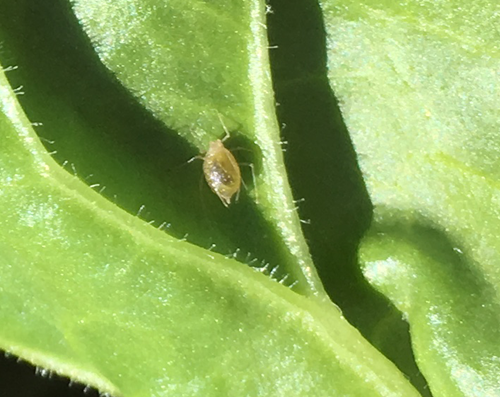Full details of application and conditions available HERE
The 2019 sugar beet crop will be grown without neonicotinoid seed treatments; heralding a new approach to growing sugar beet.
What does this mean to industry:
Submitting a sample to the plant clinic
BBRO Prepare the sugar beet industry for growing the crop without neonicotinoid treatments.
In October the government announced that the emergency authorisation application for the use of neonicotinoid seed treatments (thiamethoxam and clothiadinin) for 2019 was refused. BBRO is extremely disappointed in this decision as the scientific evidence for their limited use on sugar beet was strong. However, whilst there are no other treatments equivalent to the neonicotinoids for the broad spectrum of pests, there are still other products commercially available that can be used in 2019 to help control a range of soil-borne pests and other pests e.g. leaf miner and aphids.
Our current guidance for the 2019 season is as follows:
- You can use one application of the newly-registered product flonicamid (Teppeki), which is authorised for the control of virus-carrying aphids in sugar beet in the UK. To ensure this is the most effective application good timing will be critical.
- We suggest avoiding the use of pyrethroid and carbamate insecticides in an attempt to control virus yellows, as the main virus vector is the aphid Myzus persicae and currently 89% of the UK population have complete resistance to these products so they will be ineffective and a waste of money.
- The foliar pyrethroid lambda-cyhalothrin (e.g. Hallmark Zeon) is the only insecticide registered for leaf miner control in sugar beet. However, this should not be used more widely in an attempt to control virus-carrying aphids as it will also have a negative impact on beneficial insects that predate aphids and would exacerbate virus yellows infection within crops.
- Tefluthrin (Force) will be available as a seed treatment for soil pest control, but this product does not control aphids or leaf miner.
Beyond 2019, BBRO is undertaking and supporting extensive monitoring activities and a programme of new research and trial work to develop alternative, sustainable solutions to neonicotinoid seed treatments. We are also working with the breeding companies to identify alternative genetic solutions for controlling virus yellows, however, we do not anticipate that commercially available varieties will become available to growers until the mid-2020’s.
BBRO is doing everything it can to support the industry and when we have new information available to help growers we will make this immediately available.
Never has it been more important for a planned strategy for growing the beet crop. Establishment is key, making sure the beet seed has the best start will help to protect it from infection from virus yellows, along with building the crops resistance to a number of other pests and diseases. BBRO will be issuing a new version of the BBRO Reference Book to support growers but the main 4 points to be considered are:
1. On-farm hygiene.
2. Seed bed preparation.
3. Soil health - condition and nutrients.
4. Alternative approaches to crop protection.
Submitting a sample to the plant clinic
For reliable virus testing we need at least 8cm3 of leaf material, preferably 1 or 2 leaves from each plant requiring testing. Small leaves which are senescing generally do not provide enough leaf tissue to test. To ensure the leaves reach us in good condition, wrap the leaf stems in damp but not wet tissue and place in a sealed sandwich bag. Remember to include your name and contact details as well as the location and date the samples were collected from. Where samples from multiple sites/areas of sites are included please label the leaves accordingly. Please mark sample envelopes/packages clearly: BBRO PLANT CLINIC.
Not sure what this means to you? Read our list of frequently asked questions (below or download here) or forward your own questions to the BBRO Team.




